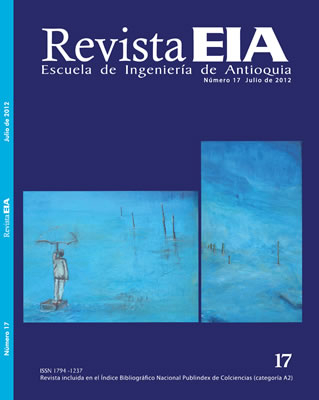CRITERIOS SISMOLÓGICOS PARA SELECCIONAR ACELEROGRAMAS REALES DE LA RED NACIONAL DE ACELERÓGRAFOS DE COLOMBIA PARA SU USO EN ANÁLISIS DINÁMICOS (SEISMOLOGICAL CRITERIA FOR THE SELECTION OF REAL ACCELEROGRAMS FROM THE COLOMBIAN NATIONAL NETWORK OF ACCELE
CRITERIOS SISMOLÓGICOS PARA SELECCIONAR ACELEROGRAMAS REALES DE LA RED NACIONAL DE ACELERÓGRAFOS DE COLOMBIA PARA SU USO EN ANÁLISIS DINÁMICOS (SEISMOLOGICAL CRITERIA FOR THE SELECTION OF REAL ACCELEROGRAMS FROM THE COLOMBIAN NATIONAL NETWORK OF ACCELE


This work is licensed under a Creative Commons Attribution-NonCommercial-NoDerivatives 4.0 International License.
Copyright statement
The authors exclusively assign to the Universidad EIA, with the power to assign to third parties, all the exploitation rights that derive from the works that are accepted for publication in the Revista EIA, as well as in any product derived from it and, in in particular, those of reproduction, distribution, public communication (including interactive making available) and transformation (including adaptation, modification and, where appropriate, translation), for all types of exploitation (by way of example and not limitation : in paper, electronic, online, computer or audiovisual format, as well as in any other format, even for promotional or advertising purposes and / or for the production of derivative products), for a worldwide territorial scope and for the entire duration of the rights provided for in the current published text of the Intellectual Property Law. This assignment will be made by the authors without the right to any type of remuneration or compensation.
Consequently, the author may not publish or disseminate the works that are selected for publication in the Revista EIA, neither totally nor partially, nor authorize their publication to third parties, without the prior express authorization, requested and granted in writing, from the Univeridad EIA.
Show authors biography
Abstract: The use of real accelerograms as input in dynamic analysis is desirable as they provide realistic information about the nature of the strong ground motion; in addition, accelerograms capture different characteristics that can be produced by earthquakes at different locations. Colombian design code allows for the use of real accelerograms as input to time-history analysis. The horizontal component of a minimum of three different accelerograms is required by the code; all of the accelerograms must be representative of the expected ground motion at the site. In this paper the database of Colombian National Network of Accelerographs (Red Nacional de Acelerógrafos de Colombia, RNAC) is analyzed in order to assess the availability of records for different ground motion characteristics for their use as input in dynamic analysis. Groups of accelerograms that could be used as input for dynamic analysis were identified. However, if only records from the RNAC are used, it is not possible to completely cover the selection requirements specified on the Colombian design code.
Article visits 369 | PDF visits 187
